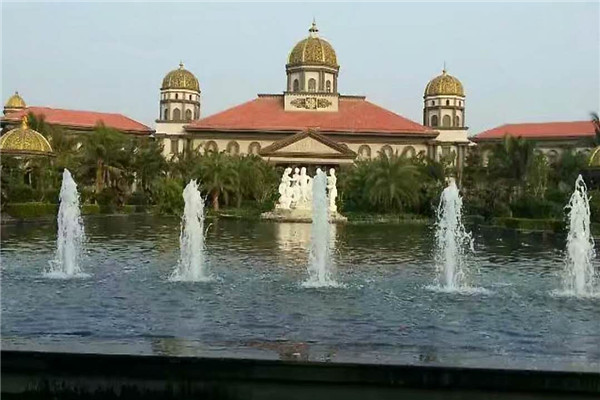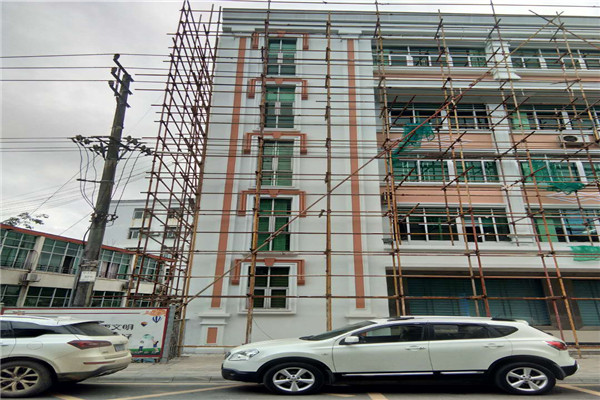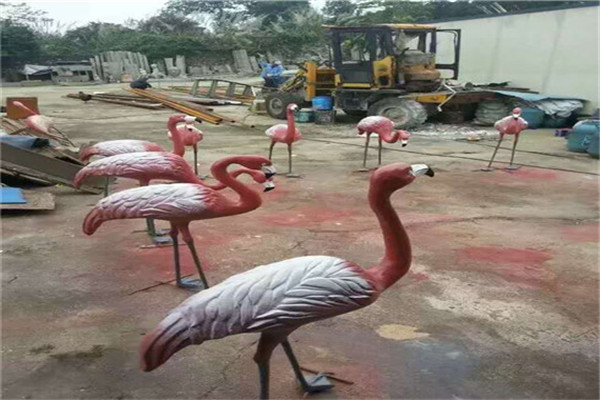
The types of stone inscription monuments include monuments, memorial monuments, merit monuments, temple monuments, Dianzi monuments, mausoleum monuments, etc. Except for a few wordless steles, they are generally literal steles. Usually, characters are carved on the body of the stele, and some are accompanied by carved patterns. The pedestal and cover of the stele are mostly carved with decorations, birds, animals, flowers, and mascots. The cover of the stele of the imperial family is also carved with dragons and phoenixes. Marble is the most commonly used stone for making the stele, and sandstone and granite are also commonly used. Some of the steles are huge, and some of them become a group of steles. Stone books are written with stone instead of paper, and carved instead of pen, which is very ingenious. There are many famous works of stone tablet processing and stone calligraphy carving. For example, "Xi'an Forest of Steles" includes more than 3000 historical steles from Han Dynasty to Qing Dynasty. It is the largest collection of stone books in China. Together with the "Forest of Steles in Hanlin" under construction in Kaifeng, it can be said that it is a sea of steles, and it is a collection of calligraphies of regular script, line, grass, seal script, clerical script and Wei style by famous calligraphers of all ages. In addition to large-scale carvings such as stele books and cliff carvings, there are also some stone carvings, such as mourning volumes in imperial tombs and modern fine carved small stone books, such as more than 100 mourning volumes of white marble excavated in the tomb of the prince of the Tang Dynasty, and six stone books of "Thirty six Strategies" carved in tile slate in modern Chengdu, a total of 26 pages and 1278 words, bound into a volume with eyeliner, each page is 2.2.6mm, which can be read.

When people talk about jade cultivation, the word "cultivation" not only tells us that jade is a living substance, but also contains a lot of knowledge. The maintenance of jade jewelry can be summarized as follows: the hardness of jade is very high, but it is easy to crack after collision. Sometimes, although the cracks cannot be seen with the naked eye, the molecular structure in the surface of jade has been damaged, with dark cracks, which greatly damages its perfection and economic value. Avoid dust as much as possible. If there is dust on daily jadeware, it should be cleaned with a soft brush; If dirt or oil stains are attached to the surface of the jade, they should be brushed with mild soapy water, and then washed with clean water. Do not use chemical degreasing agent or degreasing fluid. It is better to put it in the jewelry bag or jewelry box to avoid scratches or damage. If it is high-grade jade jewelry, do not place it on the counter to avoid dust and affect the transparency. Try to avoid contact with perfume, chemicals, soap and human sweat. If jade is exposed to too much sweat and is not wiped clean immediately after wearing, it will be eroded, causing damage to the outer layer and affecting the original brightness. Especially the "glass ground" jadeite and white sheepskin jade, which also avoid sweat and grease. Jade should be protected from the sun, because the expansion of jade in case of heat will affect its quality. Hibiscus jade, crystal, agate, etc. may even burst under high heat. Wipe the accessories with clean and soft white cloth, not with dyed cloth or hard fiber cloth. Jade jewelry inlaid with diamonds, rubies, emeralds and other precious stones should only be wiped with a clean white cloth to remove grease, dust, etc., which helps maintain and maintain the original quality. Keep proper humidity. The quality of jade depends on a certain humidity, especially for aquabilite and crystal jade. The surrounding environment shall not be too dry.

Root carving is to create artistic works of characters, animals, utensils and other artistic images through conception, artistic processing and process, taking the autogenetic form and distorted form of tree roots (including tree bodies, nodules, bamboo roots, etc.) as the object of artistic creation. Root carving art is a kind of plastic art that discovers natural beauty and shows creative processing. The so-called "three parts of labor, seven parts of nature" means that in the creation of root carving, most of the natural forms of root materials should be used to express artistic images, and a few of them should be artificially processed and modified. Therefore, root carving is also called "root art" or "root art". The basic technique of root carving is to use exaggeration, fantasy and abstraction to reflect real life. To be specific, it is to make a comprehensive and careful observation of the selected root material and make a clever idea. By virtue of its shape, texture, knots, concavity and convexity, curvature, holes, and so on, it is a bold idea to combine the virtual with the real. The line seeks the usable value of the material itself with a variety of themes and contents, and is good at finding the extraordinary from the ordinary, and gradually determines the overall image of the creation. It is very important to make clear the creative idea and imagine boldly for the root generation creation.

From the perspective of development, sculpture can be divided into traditional sculpture and modern sculpture. Traditional sculpture is a visual, tactile and static three-dimensional art form molded with traditional materials; Modern sculpture uses new materials to make anti traditional four-dimensional, five-dimensional, acousto-optic, soft and dynamic sculptures. According to traditional materials, high quality EPS decorative materials According to environment and function, it can be divided into urban sculpture, garden sculpture, indoor sculpture, outdoor sculpture, desk sculpture, shelf sculpture, etc. There are many kinds of sculpture materials, such as clay, stone, wood, metal, gypsum, resin, ivory, etc. Then several categories were developed: wood carvings: wood carvings have a long history. Most of the early themes were centered on religion. In addition to religious icons, they were also used for the decoration of altars and religious places. In countries where wood building flourishes, wood carving develops with architecture. Modern wood carvings have quite diversified styles and features, and artists like to use abstract forms to express them. In addition, wood carving is also an important contributor to the invention of printing. Please see woodcut prints for details; Stone carving: The regions where stone carving is developed have a lot to do with where the stones suitable for carving are produced. The regions where stone carving is developed have a long history of stone carving. Qionghai EPS decorative materials In the past, stone carvings were often used as decorations of gardens, signs of doorways, or architectural decorations of mausoleums. Because the stone is thick (not easy to be stolen), and the details of carvings are not easy to be damaged by wind and rain, stone carvings are mostly in outdoor environments. The common stone carving material is marble. There are clay sculptures, ice sculptures, sand sculptures, metal sculptures and pottery.

It is a three-dimensional plastic art to use certain material materials to produce works of art with solid image. Because the production methods are mainly sculpture and molding, it is called sculpture. According to the production process, sculpture can be divided into two categories: sculpture and sculpture. Subdivision is divided into carving, carving, molding, chiseling, carving, casting and other skills and techniques. According to genre, sculpture can be divided into memorial sculpture, urban garden sculpture, sculpture, tomb sculpture and exhibition sculpture. According to the style, sculptures can also be divided into head portrait, bust portrait, bust portrait, full body portrait, group portrait, etc. According to the technique and form of expression, sculpture can be divided into three categories: round sculpture, relief sculpture and openwork sculpture. Round sculpture, also known as "muddy sculpture", is a three-dimensional sculpture that is not attached to any background and can be viewed from all sides. The round sculpture is characterized by a solid image standing in space. When creating it, one must take into account its sense of volume and weight. When shaping the image, one must also take into account that people watch it from different angles. Relief, also known as "relief", is to carve a convex artistic image on the plane. According to the different degrees of surface relief, relief can be divided into high relief (high and low relief, deep relief) and low relief (low and low relief, shallow relief). The openwork is between the round sculpture and the relief sculpture. On the basis of the relief sculpture, it is made by hollowing out the background, but it does not leave the plane, just like a round sculpture attached to the plane background.

Decoration materials are divided into two parts: one is outdoor materials, the other is indoor materials. Indoor materials are divided into five types: solid materials, plates, sheets, profiles, and wires. The real material is also the raw material, which refers to logs and logs. The commonly used logs are Chinese fir, red pine, elm, ash, camphor, basswood, and the more valuable ones are rosewood, beech, oak, etc. The timbers used in decoration are mainly made of fir, and other timbers are mainly used for supporting furniture and carved accessories. The technique of artistic processing of articles for daily use or living environment. It must be organically combined with the decorated object to become a unified and harmonious whole, so as to enrich the artistic image, expand the artistic expression, strengthen the aesthetic effect, and improve its function, economic value and social benefits.






